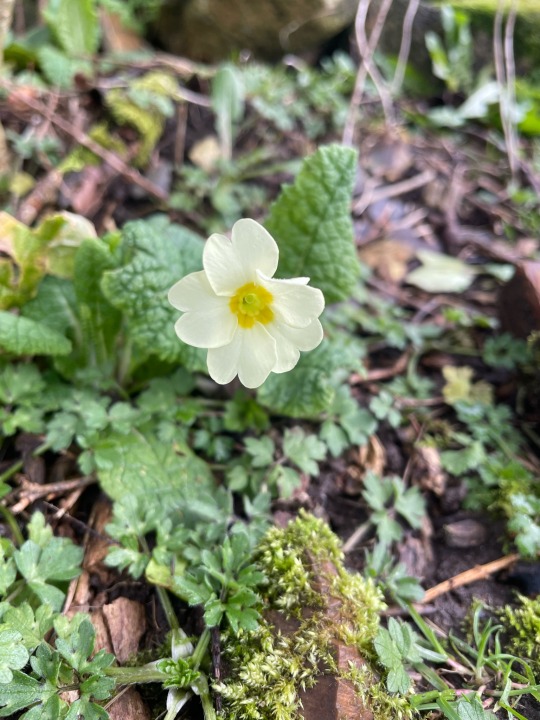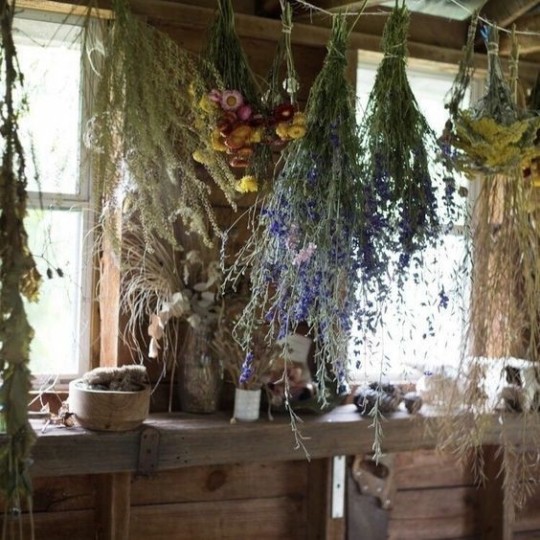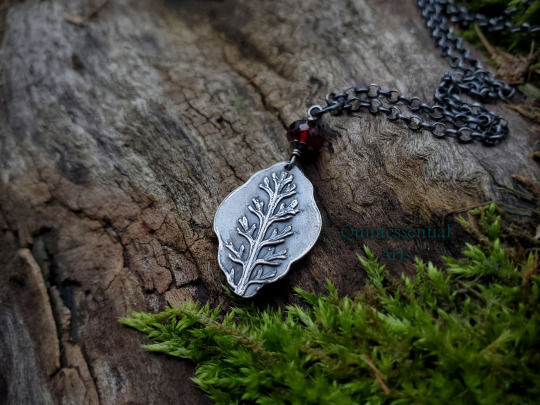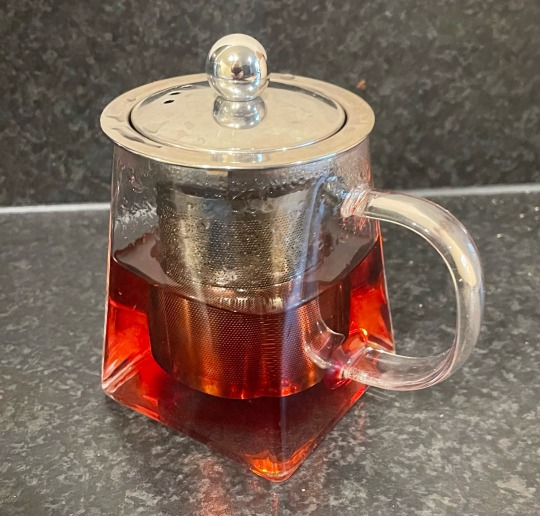#herbalmedicine
Text

#cozycore#cottage life#cottagecharm#cottagestyle#grandma aesthetic#plants#warmcore#countrycore#cottage garden#gardencore#herbalmedicine#herbology#herbalism#herbal magick#plants and herbs#plant core#plant aesthetic#plantblr#mushroom aesthetic#mushroomcore#mushrooms#spell jars#spell jar#kitchen witch#witches#witchcraft#cottage witch#earth witch#kitchen witchcraft#green witchcraft
742 notes
·
View notes
Text
Herbalism 101: Dill
EP. 5

Fun fact! "Dill" comes from an old English word that means "to lull" because it was often used to soothe colicky babies.
Associations: Money, luck
Uses in the kitchen
Most commonly used in Eastern European, Russian, and Middle Eastern cuisines, dill is used in a wide array of food. You most likely think of pickles, which uses the top part of the plant. The leaves or "aerial" part of the plant is used most of the time in cooking. It goes great in acidic and savory foods, as well as with food like salmon and eggs.
Uses in healing
I tend to used the seeds more frequently when it comes to herbalism. I will often chew on a seed or two to help with bad breath. Some people also use the seeds in a tea to help with period cramps.
Uses in witchcraft
Carrying seeds in a small pouch or your pocket will attract luck and money. Similarly, using the herb in cooking with intention will attract the same. Because you can buy it dried for the kitchen, I love using it in spell jars.
Tips for growing at home
Dill is resilient and can grow in most climates in summer. An outdoor pot or garden is best though, because it can get tall. It is a great companion plant for cabbage but not carrots!
Recipe
One of my favorite family recipes is super simple and tasty. Dill dip is something we always have at family functions.
You need:
2 part sour cream
1.5 part cream cheese
1/4 part dried dill
1/4 part garlic powder
Mix and enjoy with Hawaiian rolls !
#herbalism 101#herbalism#kitchen witch#witchcraft#green witch#cottage witch#herbs#spellwork#herbalmedicine
608 notes
·
View notes
Text
Unlocking the Secrets to a good Health and Long Life with Simple Fruits, Veggies, Nuts, Herbs & Spices 🍏🥦🥜
In a world inundated with complex diets and fads, "How To Live Healthy and Long Life With Simple Fruits, Vegetables, Nuts, Herbs & Spices" offers a refreshing perspective on achieving optimal health and longevity. Authored by Nancy Jacobsim (Ph.D.), this insightful book provides practical strategies for harnessing the nourishing power of nature's bounty. From vibrant fruits to crisp vegetables, wholesome nuts, and aromatic herbs and spices, this book celebrates the abundance of nutrient-rich foods readily available to us. By incorporating these simple yet potent ingredients into our daily lives, readers discover the keys to vitality and well-being.
#NutritionEducation#HealthyLiving#LongevitySecrets#WellnessGuide#NutrientRichFoods#WholeFoodsApproach#PlantBasedDiet#BalancedNutrition#HolisticHealth#NaturalRemedies#NutritionalScience#SimpleDietTips#HerbalMedicine#SpiceUpYourLife#SuperfoodEssentials#DiseasePrevention#HealthAndWellness#NutritionalBalance#FreshProduce#LifestyleChoices#SustainableHealth#NutritionalBenefits#MindfulEating#HealthJourney#WellnessInspiration#Healthandlongevitybook#Nutritionalwellnessguide#Superfoodsecrets#Naturalhealthtips#Balanceddietsolutions
9 notes
·
View notes
Text
Unveiling the Beauty of Butterfly Pea Tea: Nature's Blue Elixir
Clitoria tea has a color so intensely blue that it is almost unreal. You would think that someone poured some paint or artificial dye into a cup, mixed it with water and decided to drink it. However, this amazing color of the infusion and its health properties are true. How is blue clitoria ternate tea produced and why is it worth being interested in?
Blue tea – origin
If you’re still wondering if blue tea exists, we assure you that it does. Its color is not a magic trick or artificial dyes, but a 100% gift of nature.
What is blue tea made from?
Blue (actually blue-violet) tea (Butterfly Pea tea) is an infusion obtained from the dried leaves of Clitoria ternatena, a tropical climbing plant from the Fabaceae family.
Clitoria ternatea, whose Latin name is Clitoria ternatea L., comes from Africa and equatorial Asia – India, Malaysia and Indonesia, although it has now spread almost all over the world. In recent years, it has also been very popular in the Middle East (Egypt, Afghanistan, Syria, Persia and Iraq).
Nowadays, clitoria ternatena is cultivated mainly as an ornamental and medicinal plant, and due to its soil-fertilizing properties, it is also used as fertilizer (mainly in Australia). In the past, it was also sown in pastures for farm animals and was also used for hay and chaff.
Are you wondering where clitoria gets its “bold” and suggestive name? It is related to its flowers, which in their appearance resemble female sexual organs (clitoris is the Latin name for the clitoris). The idea to name this plant this way came up in the 18th century by the Swedish botanist Carl von Linne – a man with an very rich imagination, the same one who gave orchids the name Orchis – from the Greek “kernel”.
Despite protests from a large group of more conservative scientists outraged by the frivolous name proposed by von Linne, the term “clitoria” has persisted over time and is still used today.
As for the second part of the name – “Ternatena” – there is no certainty as to its etymology. However, it is believed that it may be related to the small island of Ternat belonging to the Indonesian archipelago, where the clitoria samples collected by Carl von Linne were supposed to come from.
Butterfly pea – morphology
Clitoria is a herbaceous plant with large leaves up to 17 centimeters long. Its flowers – most often intensely blue – have a characteristic yellow-white spot in the middle.
Blue tea – Clitoria Ternatena
As for clitoria fruits, they grow in approximately five-centimeter-long pods covered with hairs, with about 6-10 pods in each. They are edible when cooked.
Clitoria ternatea – culinary use
It turns out that the pods are not the only edible part of this plant. Its roots and leaves are also used to prepare dishes, and of course, it is completely edible flowers. They are particularly popular in Asian cuisine, where they are used to color various dishes, eaten in cakes or processed into syrup.
In other parts of the world, such as Australia, a type of purple-blue gin infused with clitoria flakes known as ink gin has become popular. In Europe, however, the most popular infusion of clitoria flowers is known as blue tea.
Clitoria ternate infusion should not be confused with Chinese oolong tea, also known as blue, emerald, or turquoise tea.

The main difference between them is that oolong tea is made not from flowers, but from leaves of a completely different plant – Camellia sinensis – the popular tea bush.
What’s more, oolong infusion is not blue at all, but – depending on the brewing time – slightly or intensely yellow. However, the herb itself, which is partially oxidized during the production process, has a characteristic brown-blue color.
Clitoria/Butterfly Pea flowers – where does their color come from?
What makes the ternate clitoria so incredibly beautiful is, of course, its unusual color flowers. Are you wondering where it comes from?
It turns out that this intense blue color is related to the content of anthocyanidins – organic chemicals found in flower and fruit cells of some plants.
Anthocyanidins have strong coloring properties and their color changes depending on the pH of the environment in which they are found. In clitoria flowers, you will find one of their types – delphinidin, which is also found in blueberries, black currants, grapes, red cabbage, chokeberry, blackberries and elderberries.
As a natural dye, anthocyanidins are used not only in gastronomy but also in the production of cosmetics and the textile industry. Due to their aesthetic value, butterfly pea flowers are used to make potpourri mixtures, as well as as an addition to soaps, candles, and other decorative elements.
FUN FACT:
Did you know that the color of blue clitoria tea changes when it comes into contact with other substances?
Under the influence of acids (e.g. lemon) it turns purple, while substances with an alkaline pH (e.g. hibiscus flowers) change their color to purple.
Clitoria ternate – tea and its brewing
Put 2-3 dried flowers into the kettle.
Pour hot water over it.
Leave to infuse for about 5-10 minutes until the infusion becomes an intensely blue color. Blue tea, unlike green tea, does not become bitter if brewed for too long.
Strain and pour into a cup.
Another, equally effective way to prepare blue tea is to boil water with dry flowers in a pot and pour the strained infusion into a mug or cup.
If you want to enhance the therapeutic properties of the infusion, increase the amount of dried herb added. Also take into account that after brewing, clitoria flowers expand up to twice in size.
What does blue tea taste like? The taste of clitoria ternate flower infusion is slightly herbal (a bit reminiscent of chamomile) and slightly earthy. According to some, it resembles a combination of green and red tea.

Since the taste of the infusion itself is not very expressive, it is worth enriching it with various additives. Blue tea tastes great with sugar or honey. It is also often served with lemon, lemongrass, and hibiscus, and added to other herbal, green, or oolong teas.
Blue tea – Clitoria Ternatena
A very popular and visually attractive way to use clitoria flowers is to freeze them in ice cubes and add them to cocktails, water, and other chilled drinks.
Try different combinations of hot or cold blue tea and see with your own eyes how the color of the infusion changes under the influence of its flowers.
Blue tea – health properties
Do clitoria and its tea have anything more to offer apart from the unique color that changes as if under the influence of magic? Definitely yes!
Blue tea in Ayurvedic medicine
Clitoria is a herb widely used in traditional Ayurvedic medicine originating from India. It is known in this country as Shankhapushpi, Aparajita or Sankhalii (depending on the region) and has been used for centuries as a means to improve the functioning of the brain and central nervous system.
According to local beliefs, clitoria flowers, leaves and roots are supposed to help “detoxify” and cleanse the brain and nervous system. Ayurveda also attributes a lot of other properties to them – from beautifying to healing. The most important ones include:
anti-stress properties
memory improvement
anti-inflammatory effect
fighting colds
coughs and bronchitis
improving the appearance of the skin
help with constipation and hyperacidity
Interestingly, the vast majority of these traditional Ayurvedic beliefs are supported by research carried out by modern medicine since the 1960s (so far on animals and in vitro).
FUN FACT:
According to traditional Hindu beliefs, the clitoria flower brought to earth by Guru Shankaracharya should be paid as a tribute to the fierce and invincible goddess Durga, who fights against demons.
Clitoria tea – antioxidants and their rejuvenating effect
The main reason why butterfly pea flower infusion is enjoying growing interest around the world is its antioxidant effect. It is related to the presence of anthocyanidins (specifically delphinidin) in its flowers.
Anthocyanidins? Weren’t these the coloring substances described a little above?
Yes! They belong to the group of flavonoids, i.e. organic chemical compounds that act as antioxidants in human cells, stopping or delaying their oxidation (natural aging).
Another group of antioxidants found in blue tea are flavonoid glycosides that can neutralize the harmful effects of free radicals on our body.
The antioxidants contained in Clitoria ternate flowers help fight many diseases. Their most frequently mentioned properties include:
anti-inflammatory, swelling-reducing, and antipyretic effects,
decreased activity of tissue tumor factor (TNF-α), especially in obese people,
support in chronic pancreatitis,
improving the functioning of the circulatory system and preventing heart diseases,
lowering the level of glycated hemoglobin and increasing insulin concentration (important for diabetics),
inhibiting the development of glaucoma and other eye diseases,
preventing and slowing down the development of neurodegenerative diseases,
increased resistance to diseases caused by viruses, bacteria and fungi,
support in the treatment of urinary tract diseases,
reducing allergic reactions,
helping in the healing of the mucous membrane lining the stomach.
Clitoria tea – acetylcholine and its effect on the brain
Another important ingredient of blue tea is acetylcholine (ACh) – a chemical compound that is a combination of acetic acid and choline. Numerous studies on this substance confirm its beneficial effect on the muscular system, blood pressure, and heart function.
Blue tea infusion, rich in acetylcholine, is recommended for bronchitis, and intestinal and bladder problems. It is also a great nourishment for our brain and nervous system: it improves memory and helps fight neurosis, depression, stress, ADHD (attention deficit hyperactivity disorder), Alzheimer’s disease, and senile dementia.

Blue tea during pregnancy
Expecting women and breastfeeding mothers should be especially careful about their diet. Everything they eat and drink penetrates the placenta and fetus, as well as the food produced by their mammary glands.
Does clitoria ternate have any effects that may harm pregnant women? Are there any contraindications to drinking blue tea while breastfeeding a baby?
There is no clear answer to this. It all depends on the mother’s condition, the course of pregnancy, and the health of the newborn. As we mentioned, clitoria ternatena infusion has properties that change blood sugar levels, which in some cases (e.g. in the case of gestational diabetes) may be potentially dangerous.
The safest decision is therefore to stop or at least limit the consumption of blue tea during pregnancy or to consult this issue with the attending gynecologist-obstetrician and later with a pediatrician.
What are triterpenoids?
Triterpenoids are a type of phytochemical compound, i.e. substances produced by plants to protect against environmental factors (e.g. to fight pathogens).
Research shows that they also work well in the prevention and treatment of human diseases.
Butterfly pea tea – beautifying properties
Blue tea can be considered not only a natural medicine but also a cosmetic with amazing rejuvenating and beautifying properties. Eating it regularly will help increase collagen production, thereby improving the appearance and elasticity of your skin, hair, and nails.
Thanks to the content of flavonoids, clitoria ternatena infusion also has anti-inflammatory properties and will help you fight acne, redness, and other skin problems.
Clitoria ternate – tea and its properties in the treatment of cancer
What else is blue tea for? Its potential anti-cancer properties related to the presence of triterpenoids (specifically steroids and peptides) in the flowers of Clitoria ternatena are of great interest.
Elevate your wellness journey with our premium Clitoria Ternate Tea today. Embrace the natural beauty and health benefits of this exquisite blue infusion. Experience the revitalizing power of Butterfly Pea Tea in every sip. Shop now and indulge in a sensory delight unlike any other.
#BlueTea#ButterflyPeaTea#ClitoriaTernatea#HerbalTea#HealthyLiving#Wellness#NaturalRemedies#TeaLovers#TeaTime#Antioxidants#HealthBenefits#Ayurveda#HerbalMedicine#OrganicTea#FlowerTea#relax#healthy#drinks#tea#amazing body
10 notes
·
View notes
Text

The primroses are emerging. One of the prettiest edibles, makes a gorgeous tea, brilliant in skin care - but mostly they brighten up the garden and feed the pollinators 🐝
7 notes
·
View notes
Text

Just thinking about herbalism today. Trying to get myself refocused on my purpose. This was the day I received my masters degree. Reminding myself that herbs can actually help with illness and that I have created remedies and witnessed their healing power.
60 notes
·
View notes
Text
Edible purslane and poisonous spurge
19 notes
·
View notes
Text
Bị thủy đậu nên tắm lá gì để cải thiện các triệu chứng hiệu quả, nhanh chóng? Tham khảo thông tin trong bài viết để xác định các loại lá tắm trị thủy đậu tốt nhất.
#thuocdantoc#thuốc_dân_tộc#health#SkinDisease#benhthuydau#Chickenpox#HerbalMedicine#health and wellness#healthcare#wellness#health & fitness#health tips
5 notes
·
View notes
Text

#cozycore#cottage life#cottagecharm#cottagestyle#plants#grandma aesthetic#warmcore#countrycore#cottage garden#gardencore#plant core#plants and herbs#plant aesthetic#plantblr#dried plants#dried flowers#herbal magick#herbalmedicine#kitchen witch#witchcraft#cottage witch#earth witch#folk witch#folk witchcraft#country cottage#fall season#fall vibes#fall leaves#fallcore#fallblr
463 notes
·
View notes
Text
Herbalism 101: Bay Leaves
EP. 2

Bay leaves are one of my absolute favorite herbs when cooking with intention. They are delicious and very common in tons of food cultures. On top of this, they are quite easily accessible.
Properties: Protection, healing, success
Uses in the Kitchen
Bay laurel, more commonly referred to as Bay leaves, is a very versatile plant. I often use it in cooking to flavor stocks or pickled goods. With such an aromatic flavor, it tastes great in hearty or acidic dishes. Tying a bunch together with bay leaves, rosemary, and thyme is a great way to add flavor to stock.
Uses in Healing
Bay leaves have a number of benefits when used in herbalism. Bay leaves do have many digestion related benefits. They can help with bloating and gas, in this case I usually use them to make a tea along with peppermint. The leaves are also good for treating certain skin ailments that do not involve broken skin, such as dandruff! Adding bay leaf oil into your hair care routine would be a good option.
Uses in Witchcraft
Bay leaves, particularly in witchcraft, are extremely versatile. One of the most common uses is setting intentions. The easiest way I have found to do this is to use a marker or candle wax to write out your intentions or a sigil onto the Bayleaf itself. I will often use this in simmer pots or cooking (if you are cooking with it, make sure it is a safe marker for that use). Some other ways to use this is burning they leave or putting it in your shoe to carry with you throughout the day.
Tips for Growing at Home
Bay leaves come from a tree called Bay Laurel. They can be grown inside and pruned to be kept at a certain size, but because they are a slow growing tree they can ultimately reach very large sizes when grown outdoors. If you are attempting to grow it inside the most important things are well draining soil, the right amount of humidity, and lots and lots of sunlight. 
Bay leaf tea
In order to make this tasty and beneficial tea, you only need a few things: 2 bay leaves, 1 cinnamon stick, and hot water. Steep the ingredients as you would any tea and enjoy while hot. I drink this when I'm having stomach issues or I'm feeling a bit on edge.
As always, this is not medical advice. These are helpful home tips and remedies, but they will not cure diseases.
#kitchen witch#witchcraft#witch#green witch#cottage witch#herbs#magick#spellwork#herbalism#herbalmedicine#herbalism 101#bay leaves#bay leaf#intentions
481 notes
·
View notes
Text

Etsy | Facebook | Instagram
Achillea millefolium - Yarrow
Really vibing with this kinda gothic victorian pendant, especially with the blood red garnet ♥
https://quintessentialarts.etsy.com/listing/1593403612
#achillea#achilleamillefolium#yarrow#yarrowjewelry#herbalism#herbalist#herbalmedicine#plantally#plantlover#leafjewelry#botanicaljewelry#natur#paganjewelry#witchyjewellery#witchjewelry#witchythings#naturewitch#strega#hedgewitch#elven#elvenjewelery#pagan#woodlandjewelry#ecofriendlyjewelry#recycledsilver#artisanjewelry#cottagecore#handmadejewelry#riojeweler#quintessentialarts
3 notes
·
View notes
Text
Rose Hip Monograph
View the rosehip monograph on substack, or alternatively on my blog.
This monograph is taken from my most recent blog post on how rose & rose hip can support us through this current astro-weather. You can read the entire post here: click me!
ROSE HIPS
Rosa Canina

#rose#rosehips#rosacanina#herbalmedicine#herbalwitch#greenwitch#holographicherbal#synergesticherbs#herbaria#astro-weather#astrology#substack#bloggersgetsocial
7 notes
·
View notes
Text

Hibiscus Tea... so pretty I can't believed I overlooked this one for so long!
9 notes
·
View notes
Text
8 notes
·
View notes
Text
I didn't want this to die on the bottom of a long post. I feel like it needs to be said. This is pertaining to herbal medicine being used for serious conditions. Many people believe herbs are just for minor conditions, which is not true. Herbs provide lower dosages that the body tends to handle better. Medications contain large concentrations that can overload the body and cause side effects. That doesn't mean modern medicine is the devil though. There are many benefits to modern medicine and both should be used together.
Hello! I'm a clinical herbalist, which means I got my masters in therapeutic herbalism. I also have a bachelor's in biology. I don't 100% agree with statements like this (herbs are for minor conditions). There are herbs that can help better than medical treatment, and there is a time for medical treatment. Sometimes, they work beautifully together. For instance, elderberry will help with cold and flu (a literal infection) symptoms in 3 days. This is both something I have seen in multiple people and read in a peer reviewed recent journal article.
Also, my mother was diagnosed with autoimmune hepatitis, and I had to beg her to listen to me about changing her diet and adding herbs to her medication. I had to pour over an insane amount of articles because she didn't believe herbs could help. She finally listened to me, which was a great thing because her doctor was shit, and wasn't monitoring her condition. He told her she will most likely die without a transplant and then never applied to put her on a transplant list. Then he got smart with her when she was asking questions about her condition. She switched doctors and her new doctor said that her medication should have been lessened over time and that he could have killed her. Because I recommended she include nettles and ganoderma into her diet, her body was able to account for the imbalance. My mom started listening to me more, and now she doesn't feel any pain from the arthritis prolonged medication caused. Her liver has completely recovered without a transplant. She lost a lot of the swelling from her medication. She lives a completely normal life. I'm not anti-modern medicine, but there is evidence that herbal medicine treatments can have a positive affect on chronic and serious conditions.
Consult an actual expert when you need help. If that expert can't tell you when you need a doctor, then move on. Doctors kill people on a regular basis, but someone with just as much training in herbal medicine doesn't have that luxury, so they will tell you that you need a doctor.
47 notes
·
View notes
Text

Oregano, a culinary favorite that has long filled our kitchens with aroma, is a veritable powerhouse of health benefits. Well-known for its ability to lift the flavor of a wide range of foods, oregano also has a long and illustrious history in traditional medicine. In this comprehensive guide, we explore the amazing health benefits that this herb has to offer, revealing its potential that goes well beyond the kitchen. Get ready to be astounded as we reveal the mysteries of oregano's profound influence on health!
The Amazing Health Benefits of Oregano You Should Know!
#oregano#Health#healthy#healthyliving#herbalmedicine#herb#herbs#herbalhealing#healingherbs#culinaryherbs
4 notes
·
View notes